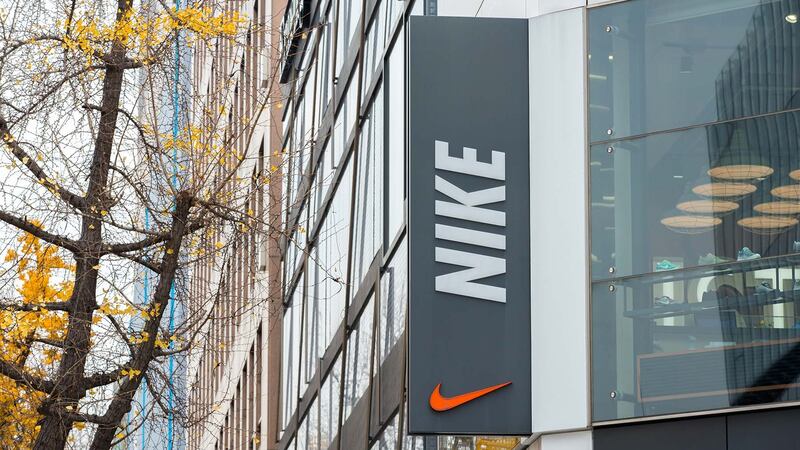
The Business of Fashion
Agenda-setting intelligence, analysis and advice for the global fashion community.

Agenda-setting intelligence, analysis and advice for the global fashion community.

Hello BoF Professionals, your exclusive weekly briefing is ready, with members-only analysis and a digest of the week’s top news. Don't forget to download the BoF Professional iPhone app to read this on your phone and get breaking news alerts.
It was a busy week for Condé Nast's public relations team.
First, a New York Post story suggested that Anna Wintour would exit the publishing giant this July and that Condé Nast International chief executive Jonathan Newhouse would decamp to New York from London to succeed his late cousin, S.I. Newhouse Jr., as chairman of the company. Representatives for Condé Nast were quick to dismiss the report as pure speculation, denying that the fashion industry's de facto president was going anywhere, anytime soon, while Newhouse himself told BoF he was neither moving cities nor taking on the currently vacant role.
Then came whispers that Condé Nast-owned titles W and Brides may be shutting down their print editions. (A representative for the company said there are no plans for this). There were also reports that, after several rounds of layoffs and restructuring, the company would be shrinking the number of floors its American arm occupies in One World Trade Center (making the name of its in-house creative agency — 23 Stories — a misnomer). The company could not confirm how the floor plan would change after a planned renovation, but inside sources who spoke with BoF on the condition of anonymity said Condé Nast could vacate as many as 10 or more floors, trimming large sums from its overhead costs.
ADVERTISEMENT
And yet, in a media landscape radically reshaped by the forces of digital technology, Condé Nast cannot simply cost cut its way to a 21st-century transformation — especially if, as market reports suggest, it is looking to sell itself.
To be sure, the company has had some notable wins during a period of intense disruption, when media brands — even newer players like Vice and Refinery29 — have struggled to find a model as profitable as the old one once was.
For instance, the elevation of Phillip Picardi to the position of chief content officer of Teen Vogue and LGBTQ multi-platform brand Them has paved the way for groundbreaking content, new formats and demonstrable success. Its management board has also put well-earned faith in chief marketing officer and chief revenue officer Pamela Drucker Mann, whose partnership with Bon Appétit editor-in-chief Adam Rappaport during her tenure there as publisher resulted in the reinvention of a once-ho-hum title into a cultural touchstone that is a winner with advertisers. Under Drucker Mann's watch, the company has also launched several successful, digital-only sub-brands, including Clever (the millennial answer to Architectural Digest), Healthyish (Bon Appétit's wellness proposition) and Basically (simplified recipes, also from Bon Appétit).
What’s more, long-term investments in digital at some of the company’s premier publications have paid off. Newyorker.com was one of the first publications to implement a paywall, all the way back in 2001, switching to a metered paywall in 2014. In 2017, news industry analyst Ken Doctor reported that 55 percent of The New Yorker’s revenue came from subscriptions, while the majority of revenue for most mainstream publications still comes from fast-declining print advertising. In order to secure its future — whether as an independent company or an acquisition target — Condé Nast will need to take more chances like this.
Digital advertising is showing signs of growth as well. The privately-held company does not disclose financial information. However, in a recent email written to the business team seen by BoF, Drucker Mann reported that in the first quarter of 2018, Condé Nast beat its video sales goal by 24 percent. (It also exceeded its print goal by “a healthy margin"). And in the second quarter of the year, digital revenue of all types is set to equal print revenue for the first time ever. The company expects double-digit digital revenue growth in 2018, led by video.
The publisher’s total digital audience is also growing. According to Drucker Mann’s note, February 2018 was the best February on record for total visitors and visits, and total social media reach now amounts to more than 230 million followers.
But Condé Nast will have to further hone its strategy in order to set the business up for viable long-term success. And while the controlling Newhouse family’s fortune may not be wrapped up in Condé Nast, its stature and cultural legacy certainly is.
So, what should the company do now?
ADVERTISEMENT
1. Further optimise the brand portfolio. Over the past several years, the publisher has called in consultants on a regular basis to help trim fat and create efficiencies across the company. As a result, certain brands have gone digital-only (Self and Teen Vogue), others have folded altogether (Details, Lucky and Style.com, which morphed into an expensive and ill-fated e-commerce venture before shuttering), while those left have almost all decreased the frequency of their print publishing rhythms. But there is more to be done. A handful of its most beloved media brands are the company's most valuable asset, so why not focus even more tightly on the marquee names — Vogue, The New Yorker, Vanity Fair, Wired and Bon Appétit in particular — and rethink how much to invest further in the others. Glamour, for instance, may be better off as a quarterly (or even biannual) book driven instead by live events and digital initiatives. (It's no coincidence the company hired journalist Samantha Barry, a social-media savant with no experience producing a print magazine, as its new editor-in-chief.)
2. Integrate operations, but not too far. For Condé Nast, the last three years have been about restructuring the company's operations. In editorial, that has meant certain editors work on more than one title at once. In advertising, category sellers now shill across brands. This has certainly helped to cut costs, though some argue the approach also dilutes the potency of the company's brands. Integration makes sense to a degree. But as well as exposure to brand risk, it might make it harder for Condé Nast to sell the company's various entities individually, should it want to do so down the road. (For instance, Condé Nast Entertainment could be sold to one buyer, Vogue to another.)
3. Think more globally. Traditionally, the American and international arms of Condé Nast have been run separately from one another, often following very different strategies with limited coordination. But even if Condé Nast International boss Jonathan Newhouse is not, as the company says, moving to New York to assume the role of chairman, isolating the US business from the rest of the world no longer makes sense. While local markets certainly still benefit from some local content, tailored for language and culture, Condé Nast's brands are global brands, which means the company is a global business and should be approached as such. Condé Nast International's establishment of a global editorial hub in London is a step in the right direction.
4. Invest in next-generation editors. For many years, one of Condé Nast's biggest assets was Anna Wintour, not only because of her editing prowess but because of her personal brand. She is well-known and well-regarded far beyond the confines of the industry, especially to those who may not be keeping day-to-day score on her successes and failures but admire her ability as a connector and a deal-maker. New Yorker editor-in-chief David Remnick is also beloved and respected. Ditto former Vanity Fair editor Graydon Carter. But when it comes to the next generation of editors, Condé Nast has not done as a good a job of fostering the right talent. Picardi is a powerful counterpoint, but the company should work double time to hire and empower talented and entrepreneurial editors like him. A sizable social media following alone is certainly no indicator of success as an editor.
5. Digital is the future: invest more, but invest smart. Its famous town cars might be gone, but some argue that Condé Nast continues to misallocate funds. Digital media is the future and the company should invest more money here to make more money in the future. While digital — and in particular, video — has been a top priority for Condé Nast, editors continue to express frustrations regarding budgets, especially in terms of developing online products that will create more engagement and, in turn, drive revenue. (The company has long had a difficult time attracting and retaining engineering talent, and queues for website upgrades remain months-long in many circumstances.) But simply throwing money at something is not the answer (see: the reinvention and demise of Style.com, in which the company had planned to invest $100 million over the first four years of the venture).
THE NEWS IN BRIEF
BUSINESS AND THE ECONOMY

Source: Shutterstock
ADVERTISEMENT
Nike says it needs more diverse leaders. Chief human resources officer Monique Matheson told employees that the sportswear company "has failed to gain traction" in hiring and promoting women and minorities. Last month, complaints of inappropriate workplace behaviour led to a leadership change at the company.
Fashion companies among worst offenders in gender pay gap. Britain's mandatory call for companies to report gender pay gap data revealed that fashion and beauty brands — predominantly focused on female consumers and audiences, and often employing an overwhelmingly female staff — are among the worst offenders in the country when it comes to paying men more than women. Condé Nast, Karen Millen, Victoria's Secret, Benefit Cosmetics and Burberry were among the most problematic businesses.
Resale market to outgrow fast fashion, says report. Resale site Thredup released its annual report, projecting that the resale market will be worth $41 billion by 2022 and outgrow fast fashion's market share by 2027. The resale growth will be led by online players, fuelled by millennials who, on average, discard items after wearing them less than 5 times yet say they prefer environmentally-conscious brands.
Nine West plans IP sale as it prepares for bankruptcy. The American footwear company is said to be close to joining the long list of retailers that have filed for bankruptcy in the last two years after struggling to adapt to the rise of e-commerce. Nine West, which is owned by the private equity firm Sycamore Partners, is expected to file for bankruptcy protection this week and plans to sell its intellectual property to Authentic Brands Group.
Maison Margiela is going fur-free. The brand is joining Marc Jacobs, Michael Kors, Versace, Gucci and other luxury brands that have recently decided to abandon fur in their collections. The move aligns with the preferences of many young consumers who are increasingly aware of the environmental implications of their purchases. In a joint interview with PETA vice president Dan Mathews, Margiela designer John Galliano said, "We want [to be ethical], a house that defends values we admire."
PEOPLE

Hedi Slimane | Photo: Y.R.
Hedi Slimane wins $11.5 million from Kering. A French court ruled that the designer was underpaid by as much as €9.3 million ($11.5 million) after taxes during his last year of employment at Saint Laurent. Slimane had a clause guaranteeing compensation after taxes of at least €10 million a year, according to the ruling. A spokesman for Kering said the company plans to appeal the decision.
Gosha Rubchinsky stopping namesake label. The Russian designer, whose namesake brand is backed by Comme des Garçons, will put a stop to the label after the Autumn/Winter 2018 season. Comme des Garçons is currently working with Rubchinskiy to devise new ways to make and sell product, according to the spokesperson. Meanwhile, chief executive Adrian Joffe announced this week that the company is planning to launch a new direct-to-consumer brand in July.
Kris Van Assche is Berluti's new artistic director. As part of a wider shuffle on the men's side at LVMH, the former Dior Homme designer has been named the new artistic director at Berluti, where he will be in charge of ready-to-wear, accessories, shoes and leather goods. He succeeds Haider Ackermann and will debut his first collection in January 2019.
Domenico Dolce and Stefano Gabbana address future of their brand. The designers said they have rejected acquisition offers and have established a trust for the company, which neither of the two can touch. They did not reveal more details.
MEDIA AND TECHNOLOGY
Ssense acquires Polyvore and shuts it down. The Montreal-based e-commerce company acquired the community-driven fashion database and search engine from Verizon subsidiary Oath for an undisclosed sum. Polyvore was founded in 2007 and claimed 20 million active monthly users in 2012, but the site's membership appears to have declined since its acquisition by Yahoo for about $200 million in 2015. Polyvore users launched an online petition to reinstate the site after Ssense abruptly shut it down.
Amazon may challenge Walmart for control of Flipkart. The e-commerce battle in India has intensified. While Flipkart, the country's e-commerce market leader, is in talks with Walmart to sell a majority stake, the Indian newspaper Mint reports that Amazon may put in a rival bid. The deal with Walmart could value the Indian company at $21 billion.
Hudson's Bay security breach impacts shares. The Canadian retailer's shares fell the most in four months after it reported a data security breach that may have put more than 5 million of the department-store company's customer payment cards at risk. A hacking syndicate targeted Saks Fifth Avenue, Saks Off 5th, and Lord & Taylor stores and is putting the data up for sale.
BoF Professional is your competitive advantage in a fast-changing fashion industry. Missed some BoF Professional exclusive features? Click here to browse the archive.
The stylist is set to unveil a bi-annual print magazine and digital platform, with a team that includes Holly Shackleton and Fran Burns.
Luxury book publishers — and husband and wife — Prosper and Martine Assouline join BoF founder and editor-in-chief Imran Amed to discuss the genesis of their publishing business and how they are growing it into a global lifestyle brand.
Now under the ownership of British publisher Future, both Marie Claire and WhoWhatWear are contending with how to grow their new parent’s US operations in the ever-challenging media landscape.
Fast Company has named The Business of Fashion one of the ‘world’s most innovative companies’ for a second time for demonstrating ‘how a media brand can leverage AI to add reader value rather than erode trust with AI-written news articles.’